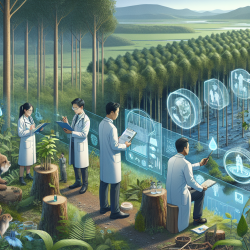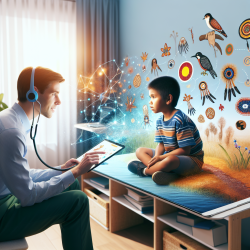Introduction
In an era where environmental sustainability is becoming increasingly critical, the role of practitioners in the biomedical field extends beyond traditional responsibilities. The research article "Biomedical research leaders: report on needs, opportunities, difficulties, education and training, and evaluation" highlights the importance of environmental stewardship within the biomedical community. This blog explores how practitioners, including those providing online therapy services like TinyEYE, can enhance their skills and contribute to a healthier environment by implementing the outcomes of this research.
Understanding Environmental Stewardship
Environmental stewardship refers to the responsibility of managing and protecting the environment through sustainable practices. The research emphasizes that environmental stewardship is not only an emerging theme but also a necessary approach for ensuring the health of our planet for future generations. Practitioners can play a vital role in this effort by adopting environmentally responsible practices in their professional activities.
Key Outcomes from the Research
- Central Organization for Environmental Stewardship: The research highlights the need for a central organization to evaluate, promote, and oversee efforts in environmental stewardship. Practitioners can support this initiative by advocating for and participating in such organizations.
- Efficient Information Transfer: The establishment of a database or clearinghouse to facilitate efficient information transfer is crucial. Practitioners can contribute by sharing data and insights that promote environmental health.
Practical Steps for Practitioners
Practitioners can take several practical steps to align with the research outcomes and enhance their skills:
- Stay Informed: Regularly update your knowledge on environmental health and sustainable practices by engaging with relevant research and participating in conferences.
- Advocate for Sustainability: Encourage your organization to adopt sustainable practices, such as reducing waste, conserving energy, and using eco-friendly materials.
- Collaborate and Share Knowledge: Work with peers and other professionals to share knowledge and best practices in environmental stewardship.
Encouraging Further Research
While the research provides valuable insights, it also opens avenues for further exploration. Practitioners are encouraged to delve deeper into specific areas of interest, such as the impact of online therapy on environmental health or the development of innovative technologies that promote sustainability.
Conclusion
By embracing the insights from the research on environmental stewardship, practitioners can not only improve their skills but also contribute to a healthier and more sustainable world. The journey towards environmental responsibility is ongoing, and every small step counts.
To read the original research paper, please follow this link: Biomedical research leaders: report on needs, opportunities, difficulties, education and training, and evaluation.










